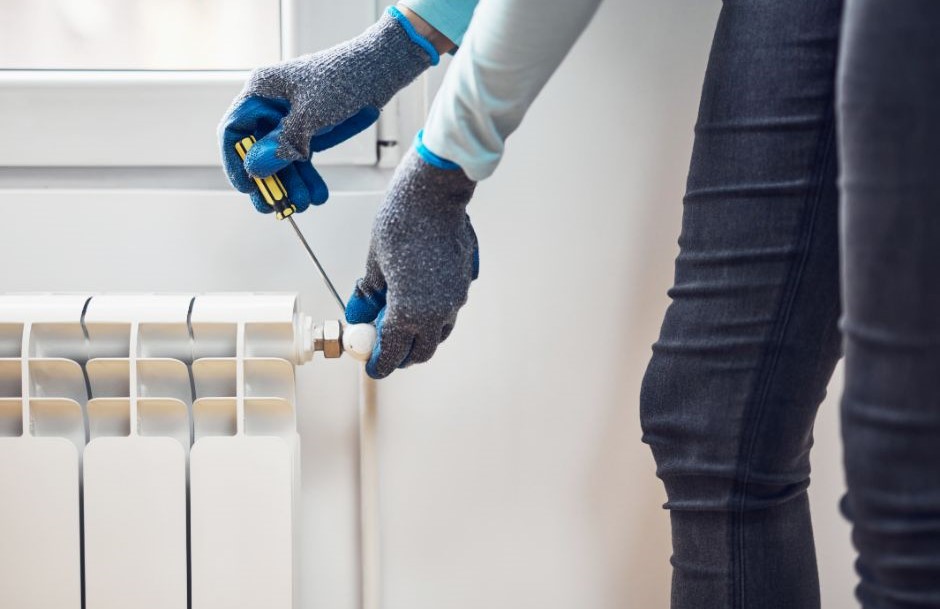Winter home maintenance tips
As the cold months close in, homeowners must ensure their properties are fully prepared for winter. The onslaught of frost, snow and icy winds can cause damage to more than just your mood. Our winter home maintenance checklist will take you through:
- Nine indoor maintenance tips
- Seven outdoor maintenance tips
- General exterior helpful tasks
- General indoor helpful tasks
- An example winter maintenance checklist
Keep reading to keep your home cosy and protected throughout the winter.
Why is winter home maintenance important?
We understand how easy it is to forget or procrastinate regarding winter home maintenance – staying wrapped up in bed or in front of the fire is more enticing than braving the cold. However, proper winter maintenance will help you prevent expensive repairs and inconveniences that cold weather can cause. Also, better home maintenance means you’ll see better efficiency from your heating and savings on bills. Some of these tasks, although minor and straightforward, can lead to significant improvements and make your home that much more cosy this winter.
How a winter home maintenance checklist can help you
Having all your winter home maintenance tasks in one place helps you remember what needs to be done each year and allows you to prepare in advance so it can be ready well before winter. Preparing a season in advance for first-time homeowners can be helpful, giving you ample time to get things done and helping you learn the common issues your home or area faces in winter. At the end of this article, you can see an example maintenance list to help you stay organised.
How do I organise my home maintenance?
Making a calendar and placing it in the common areas of your home is an easy way to keep things in your mind. Everyone in the house will walk past, sit near or generally be around the calendar, meaning it will be checked regularly, and tasks will be completed.
Nine indoor maintenance tasks

1/ Check smoke and carbon monoxide detectors
Check all smoke and carbon monoxide detectors throughout your home, ensuring you check all parts of your property – including garages and outbuildings that are wired. It can be helpful to make a note of where detectors are located for periodic checking. It can also help when it comes to tracking batteries so you can know when they were last replaced. For this living in Scotland, smoke detectors in the home are a legal requirement.
2/ Bleed radiators to improve efficiency
Bleeding your radiators helps to ensure they’re working more efficiently. You’ll have to make sure your heating is entirely off before starting:
- Hold an old towel or bucket under the bleed valve and insert the bleed key.
- Turn it anti-clockwise until you hear a hissing sound, this is the air escaping.
- When water begins to escape, turn the key clockwise and retighten the valve.
- Repeat this process on the other radiators in your home that need it.
- Now you can turn your heating back on and check to see if they are heating more correctly.
You can also ask your preferred boiler maintenance firm to calibrate your radiators, ensuring they all omit consistent heat.
3/ Turn off water valves that supply water to outdoor hose spigots
This stops water flowing through pipes to these fixtures, which can lead to freezing and burst pipes when the temperature drops. Alternatively, fit insulation around any exposed pipes to reduce likelihood for frozen pipes.
4/ Check windows and exterior doors for any cracks
A leak or crack in your windows or doors can lead to heat escaping the property, creating cold areas as the frosty air gets in. Checking allows you to seal, replace or even utilise a draught excluder for these areas.
5/ Increase or install loft insulation
Ensuring heat doesn’t escape through the roof of your property is an excellent way to keep it warm through winter. Providing your loft is insulated is a great way to do this. If you are concerned about heat loss through your roof, there’s no harm in calling a professional to inspect; their trained eye will help them spot any issues.
6/ Reverse your ceiling fan to force warm air down
When it’s warm, you want your ceiling fans to produce a wind chill effect to help you feel cooler. But in winter, we need the opposite of this, so reversing the motor in your ceiling fan and running it at a low speed helps to produce a gentle updraught, forcing warm air down into the occupied space.
7/ Have your heating system and boiler maintained annually
A plumbing or heating expert can help shed some light on the heating systems within your home so you can understand any issues and prepare resolutions. This can be particularly helpful if you own an older property to ensure the heating systems work. A high-value home insurance policy will cover Home Emergency for boilers, so long as they are annually maintained and not older than 15 years old. Failure to have your boiler professionally maintained will cause this section of the policy to be void.
8/ Check pipes that sit on exterior walls for proper insulation or freezing vulnerability
This is a great way to prevent disaster; checking your pipes for these vulnerabilities allows you to prevent pipes from bursting and damaging your buildings, general contents and valuables.
9/ Install a wireless thermostat
Many people travel during the winter to see family and friends or to get away from the winter in a bid to get some Southern Hemisphere sunshine. Installing a wireless thermostat, like a Google Nest, will allow you to control the heating of the home from anywhere in the world.
Seven outdoor maintenance tasks
1/ Get your chimney swept if you have one
If you have a chimney for your fireplace or woodstove, get it swept before winter. At the minimum, it’s recommended that you get your chimney swept at least once a year as this prevents build-up, which can become difficult to remove. We recommend you use a HETAS-qualified chimney sweep.
2/ Salting or ploughing your driveway
There are few things more frustrating in winter than a frozen driveway, meaning you can’t park your car on it without great determination, or you’re stuck when you try to leave as your car fights for traction. Gritting your driveway or ploughing it yourself if there’s snow helps you avoid these perils. This is poignant for those rural heritage homes.
3/ Store patio furniture
If you’ve amassed abundant rattan garden furniture, it can be painful to pack it all away, but this is for the best in the winter months. If you have a garage or shed, these are perfect protection so your furniture isn’t left exposed and worn by the elements.
4/ Clear debris and standing water from any flat roofs
Removing debris like leaves and twigs helps reduce the risk of freezing due to their moisture. Draining standing water from flat roofs is vital, as it stops water from collecting and freezing, potentially damaging your roof; we cover this in-depth in our guide to flat roof insurance. We recommend you have a flat roof inspected at least once every five years by a qualified inspector.
5/ Drain your garden hoses and store them in a sheltered area
If your hoses still have water remaining in them it can lead to freezing and splitting of the hoses as the water expands when it freezes. So draining your hoses and storing them in a garage or shed helps protect them from damage.
6/ Clean gutters and downspouts
Cleaning and clearing your gutters and downspouts of debris allows anything collected in them to flow down and away from your home. Preventing blockages trapping water, leaves, twigs and anything else that gets caught from weighing down your gutters and causing damage.
7/ Identify tree hazards
If you have large trees in or overhanging your garden or home they can pose a threat to your property if they endure heavy snowfall, extreme wind or heavy rain. Checking to see how sturdy they are, and taking precautions if necessary, can stop any heartache if they weaken or begin to fall. We recommend an annual maintenance check by a qualified tree surgeon or arboriculturist.



Routine exterior tasks
In addition to the indoor and outdoor maintenance tips, we recommend you consider the following routing exterior and interior tasks:
- Prevent large amounts of snow from piling up against your home by pushing it away as soon as possible.
- Ensure you have a shovel or snow plough available just in case!
- Use sand or gravel on outdoor walkways for traction, reducing the risk of slipping and any potential liability claims.
- Monitor your roof for any damage or ice dams, Check for icicles hanging from your roof line as they are a sign of poor loft insulation.
Routine interior tasks
- Monitor windows and doors for draughts.
- Keep interior doors open to allow heat circulation when temperatures are below -5°C.
- Keep heating on throughout the winter to at least 13 degrees Celsius.
- If you are going away for an extended period time, then also consider turning off your water at the main stop cock
- If your property has a basement or a cellar, we strongly recommend you consider installed a sump pump or a non-return valve to your drains.
Your winter maintenance checklist
Indoor maintenance checklist
- Check smoke and carbon monoxide detectors.
- Turn off water valves that supply water to outdoor hose spigots.
- Check windows and exterior doors for any cracks.
- Increase or install loft insulation.
- Reverse your ceiling fan to force warm air down.
- Have your fireplace or heating system inspected by a professional.
- Check pipes that sit on exterior walls for proper insulation or freezing vulnerability.
Outdoor Maintenance checklist
- Get your chimney swept if you have one.
- Salting or ploughing your driveway.
- Store patio furniture.
- Clear debris and standing water from any flat roofs.
- Drain your garden hoses and store them in a sheltered area.
- Clean gutters and downspouts.
- Identify tree hazards.
If you’ve found this winter home maintenance helpful checklist but still want extra protection for your beloved home this winter and for the years to come, look at our high-value home insurance to protect your home and peace of mind.

